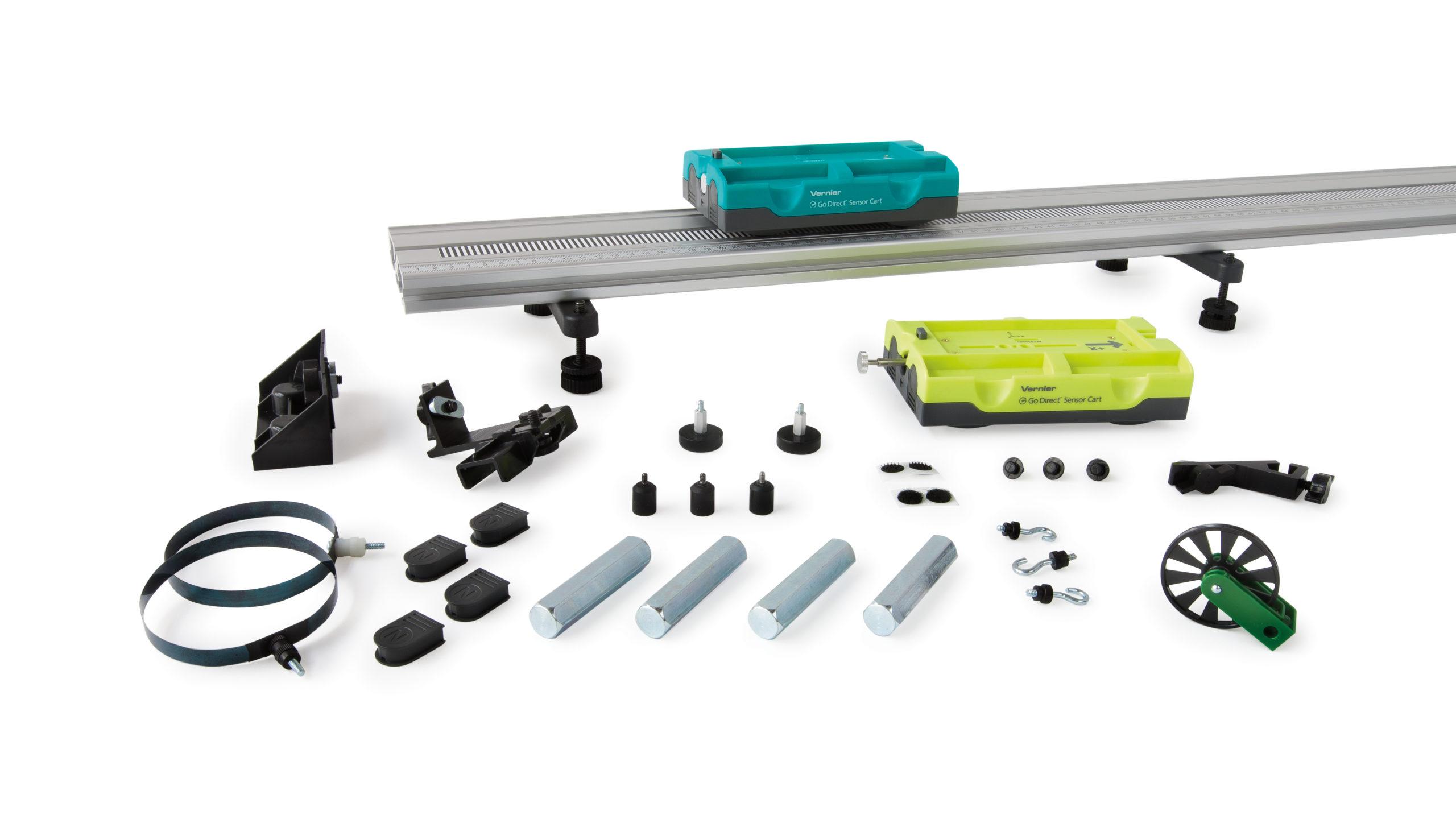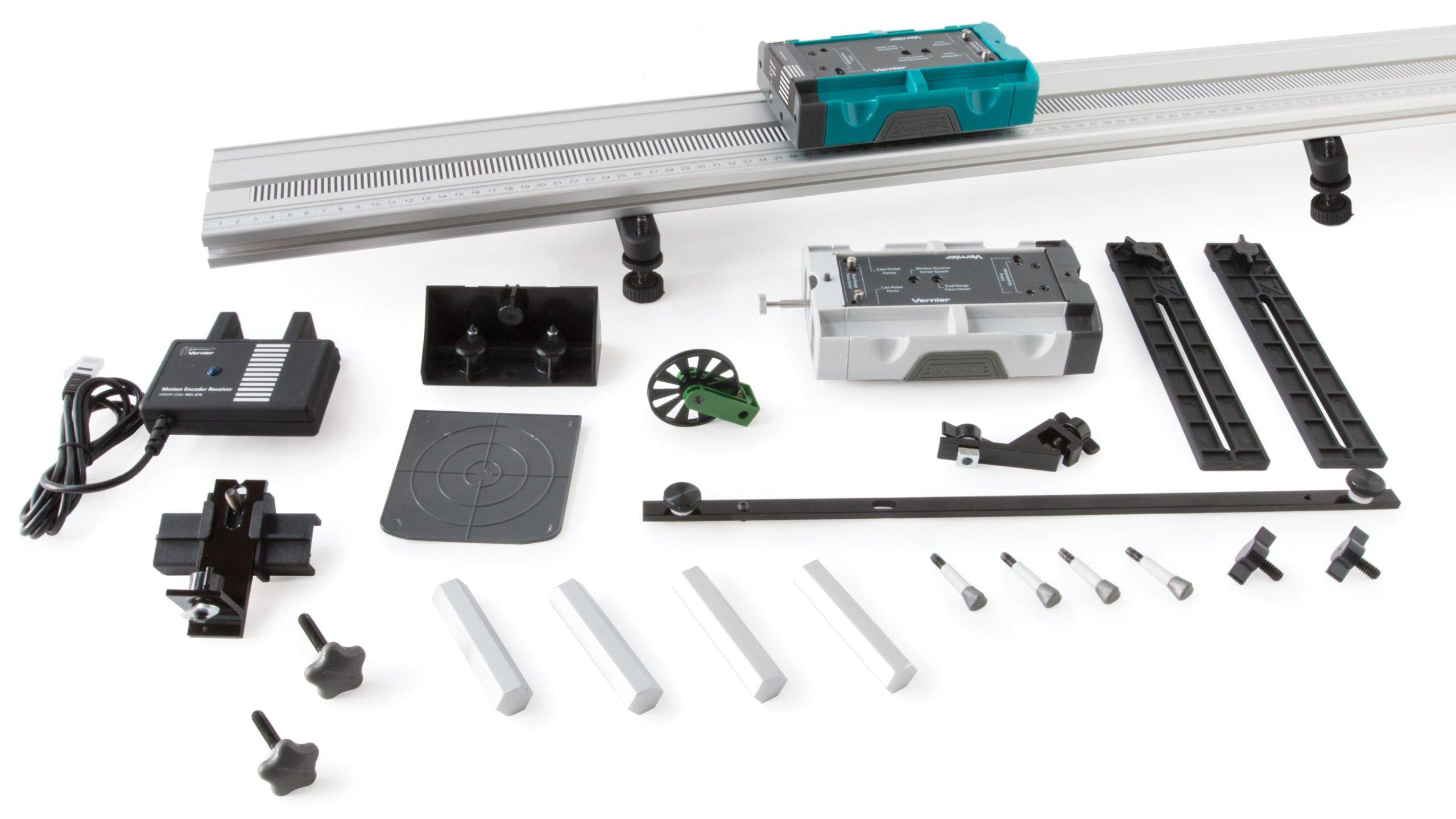Introduction
The goal of this activity is for students to recognize that energy can be conserved in a collision, but only in certain cases. Additionally, students will understand that energy is not conserved in inelastic collisions. Students will develop this understanding through a series of investigations using carts colliding on a track.
The Preliminary Observations can be performed with two carts on a track. Prepare to demonstrate different types of collisions with different cart masses. Students should observe the speeds of the carts before and after the collisions, and think about the energy transfers involved.
In their investigation, students may use video analysis, photogates, motion detectors, Motion Encoders, or Go Direct Sensor Carts to collect data for two objects colliding.
This investigation uses the following convention when describing collisions:
- Elastic collisions are collisions in which kinetic energy is conserved.
- Inelastic collisions are collisions in which kinetic energy is NOT conserved.
- Completely inelastic collisions are collisions where two bodies are stuck together after the collision.
Objectives
- Design and perform an investigation.
- Draw a conclusion from evidence.
- Identify that kinetic energy is conserved for elastic collisions and diminished in inelastic and completely inelastic collisions.
Sensors and Equipment
This experiment features the following sensors and equipment. Additional equipment may be required.
Ready to Experiment?
Ask an Expert
Get answers to your questions about how to teach this experiment with our support team.
- Call toll-free: 888-837-6437
- Chat with Us
- Email support@vernier.com
Purchase the Lab Book
This experiment is #15 of Physics Explorations and Projects. The experiment in the book includes student instructions as well as instructor information for set up, helpful hints, and sample graphs and data.










